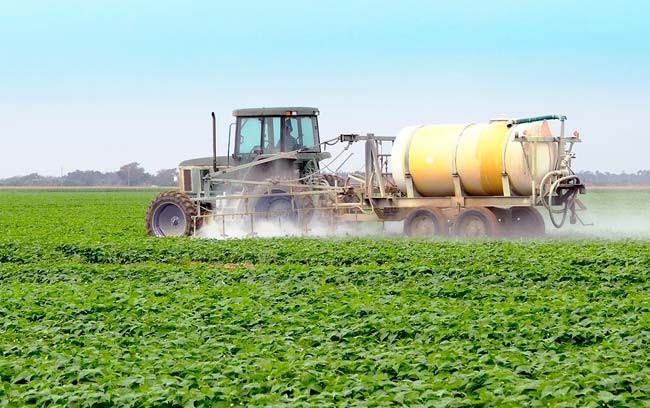- Make It Yourself Lavender Heart-Shaped Bath Bombs!
- 20 Things You Never Knew About “Down There”
- 12 Best Foods For Those Suffering From Arthritis Pain
- 12 Personal Hygiene Mistakes Almost Everyone Makes (Mom Never Told You About #4!)
- 15 Medicinal Plants And Herbs From The Cherokee People
- 12 Mind-Blowing Benefits Of Drinking Coconut Water During Pregnancy
- 12 Outstanding Winter Foods That Won’t Fatten You Up Like A Christmas Turkey
The Lies We are Told about Pesticides

Photo credit: bigstock.com
Although many of us try our best to always eat organic, sometimes it just doesn’t work out. We can’t control everything in life, so when we go to an office meeting and they are serving fruit salad, we can’t stop and ask whether it was made with organic fruit (well, you could but that might not be a good idea). However, there are plenty of people who buy conventional produce all the time with the thought that pesticides are well-regulated by the FDA, right? They can’t be that bad, can they? After all, how many pesticides can they use on a piece of fruit anyway?
More than you can imagine, friends. Currently, there are about 80,000 registered chemicals used. Of all of these thousands of chemicals, only a few hundred are actually tested to see if they are safe for human consumption, and the testing that is done is considered woefully inadequate by most doctors and toxicologists.
One problem with the testing process is that chemicals are tested by themselves. However, in the real world, most agricultural pesticides are used in combinations, and no one tests for the synergies between chemicals.
For example, ammonia, when used properly, is pretty harmless. Bleach is also harmless when used properly. But if you mix ammonia and bleach, you will have fumes so toxic that just one or two good breaths could kill you. The same applies with agricultural chemicals, but no one is testing them for possible health hazards when they mix them.
Also, most testing is only performed on the “active” ingredient. All other ingredients are called inert, and again, the full combination of inert ingredients and the active ingredient is never tested for safety. Find out top 10 companies killing the world with their pesticides.
What other lies or misleading information are we being fed? You might be shocked to find out the truth of the matter.
The ‘Insignificant Amount’ Lie
One of the biggest lies we are told about pesticides is that the active ingredient is found in such small amounts that you have nothing to worry about. This is absolutely not true. In order to find the allowable daily intake, or ADI, for pesticides in food, researchers feed this chemical to animals, and then look to see if any damage has occurred.
Once researchers find a dose that they can feed animals without observing any damage, they call this the NOAEL (no observed adverse effect level). Now this NOAEL number is usually reduced by a factor of anywhere from between 100 to 1,000. The resulting number is then considered to be the safe amount for humans. This process occurs under the assumption that the lower the dose, the less poisonous it is, however, this is a flawed concept. The actual low dose number that researchers assign is only assumed to be safe, that actual number is never tested. It’s only assumed to be safe. Think about it; would you eat something someone told you that they assumed was safe to eat? Not that they KNEW it was safe, only that they assumed?
Continue to Page 2
































